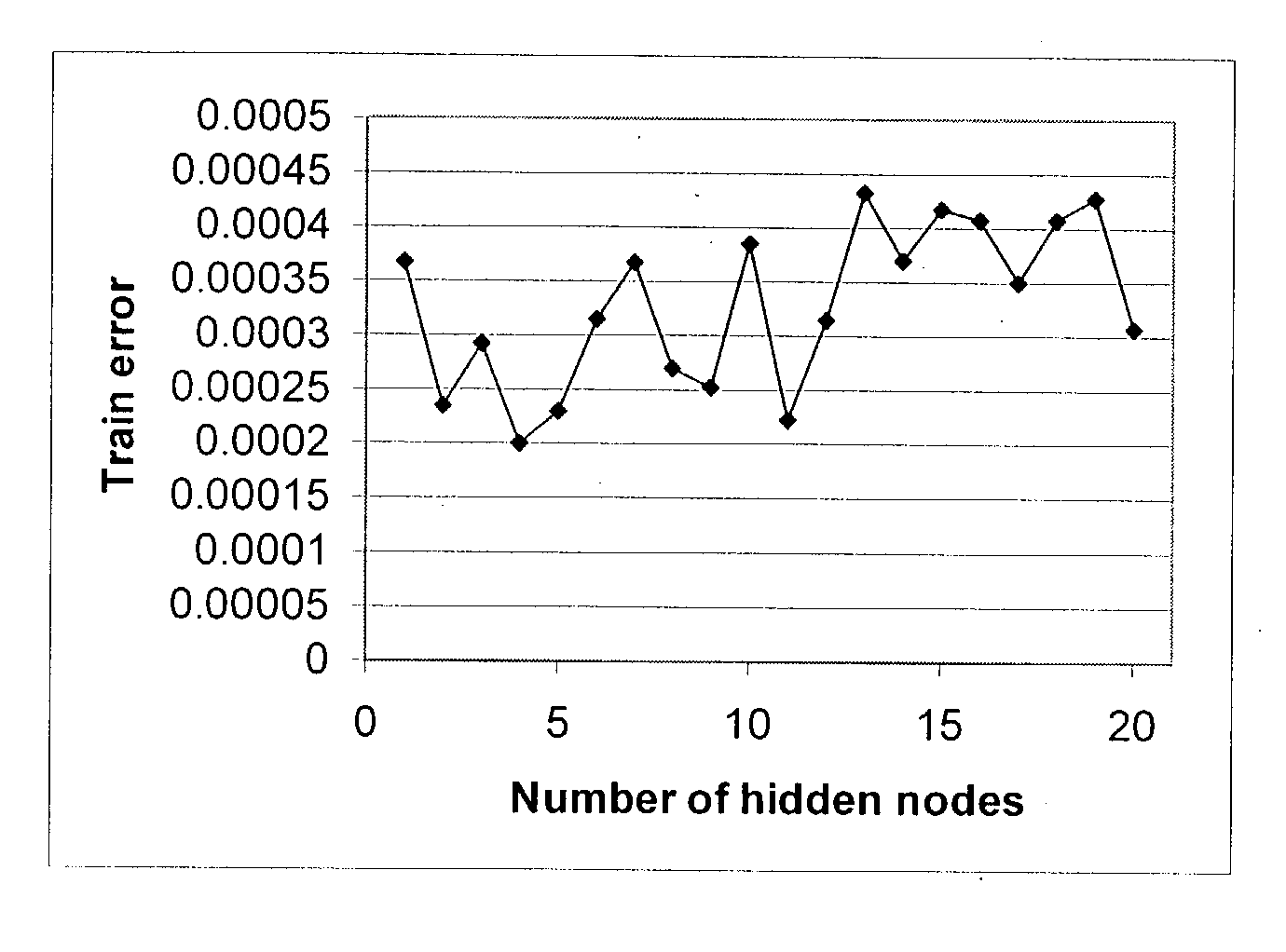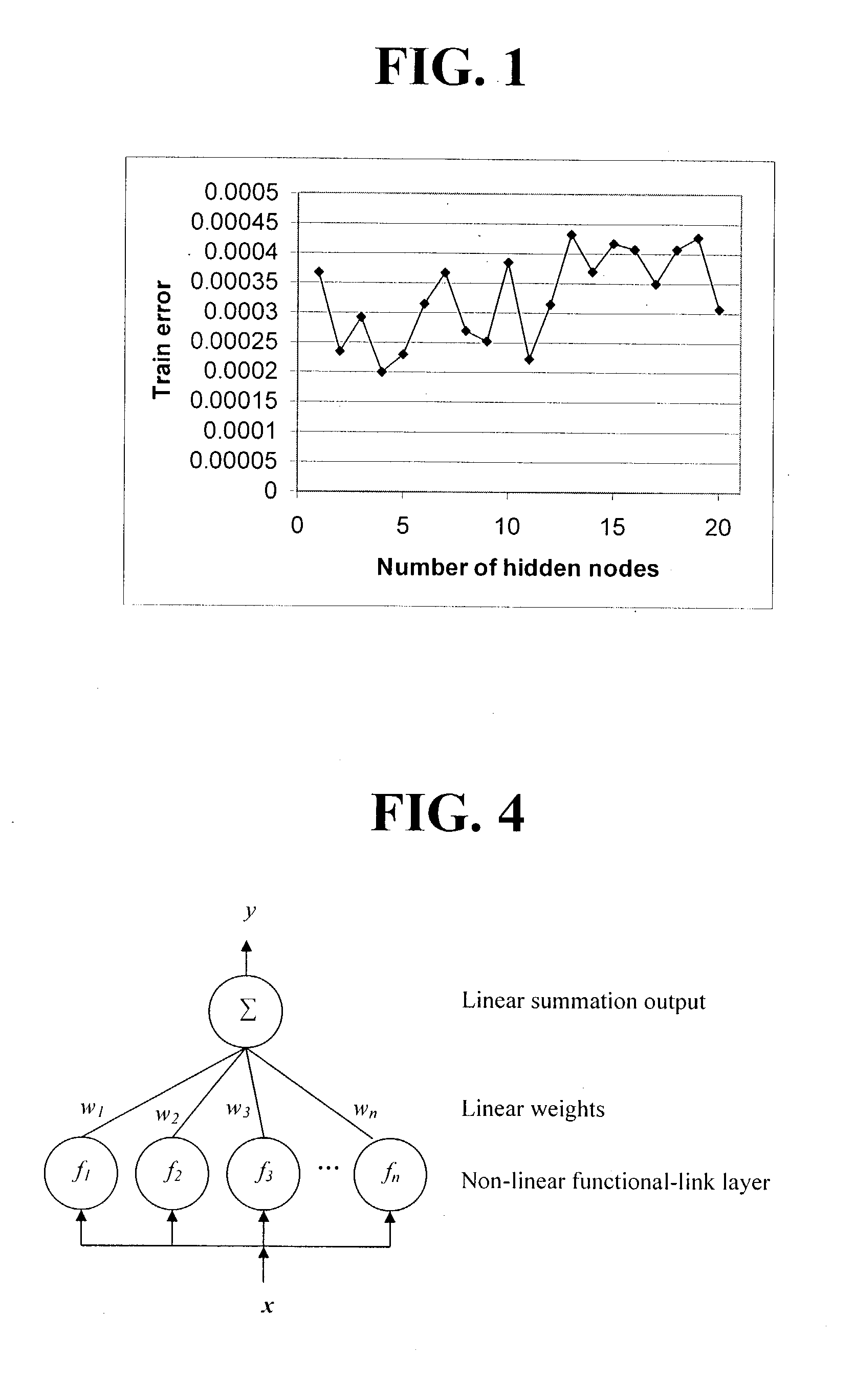Automatic neural-net model generation and maintenance
a neural net and model generation technology, applied in the direction of adaptive control, process and machine control, instruments, etc., can solve the problems of inconvenient automatic model building, inconvenient maintenance, and inconvenient use of conventional neural nets for incremental and/or adaptive learning
- Summary
- Abstract
- Description
- Claims
- Application Information
AI Technical Summary
Problems solved by technology
Method used
Image
Examples
Embodiment Construction
[0122] A simple non-linear time series example is discussed below to illustrate a process of automatic model generation and updating by using OFLN methodologies. The example may apply exemplarily to network performance and positioning of network centers.
[0123] A non-linear times series is simulated by the following equation: 8 y ( t ) = [ 0.8 - 0.5 exp ( - y 2( t - 1 )) ]y ( t - 1 )- [ 0.3 + 0.9 exp ( - y 2( t - 1 )) ]y ( t - 2 )+ 0.1 sin ( y ( t - 1 ))+ e ( t ) ( 21 )
[0124] where e(t) is a zero mean noise sequence with variance 0.01. The initial conditions were set as y(0)=0.1 and y(-1)=0. The previous two points are used to predict the value of the current point.
[0125] Two thousand samples of the time series were generated. The first 1000 patterns were used as the training set and the remaining 1000 were used as the validation set. Gaussians were used as the function approximation nodes. The centers were determined by using cluster centers and the spreads were determined by using ...
PUM
 Login to View More
Login to View More Abstract
Description
Claims
Application Information
 Login to View More
Login to View More - R&D
- Intellectual Property
- Life Sciences
- Materials
- Tech Scout
- Unparalleled Data Quality
- Higher Quality Content
- 60% Fewer Hallucinations
Browse by: Latest US Patents, China's latest patents, Technical Efficacy Thesaurus, Application Domain, Technology Topic, Popular Technical Reports.
© 2025 PatSnap. All rights reserved.Legal|Privacy policy|Modern Slavery Act Transparency Statement|Sitemap|About US| Contact US: help@patsnap.com



